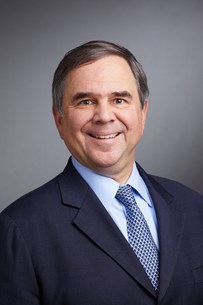Meeting
2023 ASCO Genitourinary Cancers Symposium

Yale School of Medicine, New Haven, CT
Daniel P. Petrylak , Scott T. Tagawa , Rohit K. Jain , Manojkumar Bupathi , Arjun V. Balar , Arash Rezazadeh , Saby George , Phillip Lee Palmbos , Luke T. Nordquist , Nancy B. Davis , Chethan Ramamurthy , Cora N. Sternberg , Yohann Loriot , Neeraj Agarwal , Chandler H. Park , Julia Tonelli , Morganna Vance , Huafeng Zhou , Petros Grivas
Background: Pts with PT-ineligible mUC have limited treatment options following CPI therapies; thus, new treatment options are needed. SG is an antibody-drug conjugate composed of an anti-Trop-2 antibody coupled to SN-38, a topoisomerase-I inhibitor, via a proprietary hydrolyzable linker. SG received accelerated FDA approval in April 2021 for pts with mUC who progressed after PT and CPI therapies based on the positive results of the pivotal TROPHY-U-01 Cohort 1 study. In Cohort 1, SG demonstrated an objective response rate (ORR) of 27%, a median overall survival (OS) of 10.9 mo, and a manageable safety profile in 113 pts with locally advanced or mUC (Tagawa, et al. J Clin Oncol. 2021). SG demonstrated an ORR of 28% in PT-ineligible pts with mUC who progressed after CPI therapy in preliminary results of the phase 2 TROPHY-U-01 Cohort 2 study (Petrylak et al. J Clin Oncol. 2020). Here, we report the primary analysis of TROPHY-U-01 Cohort 2. Methods: Cohort 2 pts (≥18 y) were PT-ineligible at screening, had ECOG PS 0-1, and creatinine clearance ≥30 mL/min. Pts received 10 mg/kg of SG on D1 and D8 of 21-day continuous cycles. The primary endpoint was ORR per central review by RECIST 1.1. Secondary endpoints included duration of response (DOR) and progression-free survival (PFS), per central review, and OS. Target enrollment was approximately 40 pts. Assuming the second-line ORR of 40%, 40 pts would give a 95% CI with a lower limit of 25% (CI is 0.25 to 0.57) for ORR. Results: As of July 26, 2022, the median follow-up was 9.3 mo (range, 0.5-30.6) for treated pts (N=38); median age, 72.5 y (range, 41-87), 61% male, 50% ECOG PS 1, and 66% visceral metastases (29% liver). Median number of prior therapies was 2 (range, 1-5); 50% received prior (neo)adjuvant PT, 18% received prior enfortumab vedotin, and 3% received prior erdafitinib. Median time since last prior anticancer therapy was 1.6 mo (range, 1-8) and median duration of last prior anticancer therapy was 4.2 mo (range, 1-12). Per central review, ORR was 32% (95% CI, 17.5-48.7; 32% partial response); median DOR was 5.6 mo (95% CI, 2.8-13.3; n=12); and median PFS was 5.6 mo (95% CI, 4.1-8.3). Median time to response was 1.4 mo (range, 1.3-1.5) and median OS was 13.5 mo (95% CI, 7.6-15.6). Grade ≥3 treatment-related adverse events (TRAEs) occurred in 68% of pts; the most common Grade ≥3 TRAEs were neutropenia (34%), anemia (21%), leukopenia (18%), fatigue (18%), and diarrhea (16%). TRAEs resulted in an 18% discontinuation rate. No treatment-related deaths were reported. Conclusions: SG monotherapy demonstrated a high response rate with an overall manageable safety profile in PT-ineligible pts with mUC who progressed after CPI therapy. No new safety signals were observed. These data support further evaluation of SG in pts with mUC post CPI therapy. Clinical trial information: NCT03547973.
Disclaimer
This material on this page is ©2024 American Society of Clinical Oncology, all rights reserved. Licensing available upon request. For more information, please contact licensing@asco.org
2023 ASCO Genitourinary Cancers Symposium
Rapid Oral Abstract Session
Rapid Abstract Session: Urothelial Carcinoma
Urothelial Carcinoma
Therapeutics
NCT03547973
J Clin Oncol 41, 2023 (suppl 6; abstr 520)
10.1200/JCO.2023.41.6_suppl.520
520
Abstract Disclosures
2023 ASCO Genitourinary Cancers Symposium
First Author: Scott T. Tagawa
2024 ASCO Annual Meeting
First Author: Michal Sternschuss
2023 ASCO Annual Meeting
First Author: Yohann Loriot
2024 ASCO Annual Meeting
First Author: Bradley Alexander McGregor